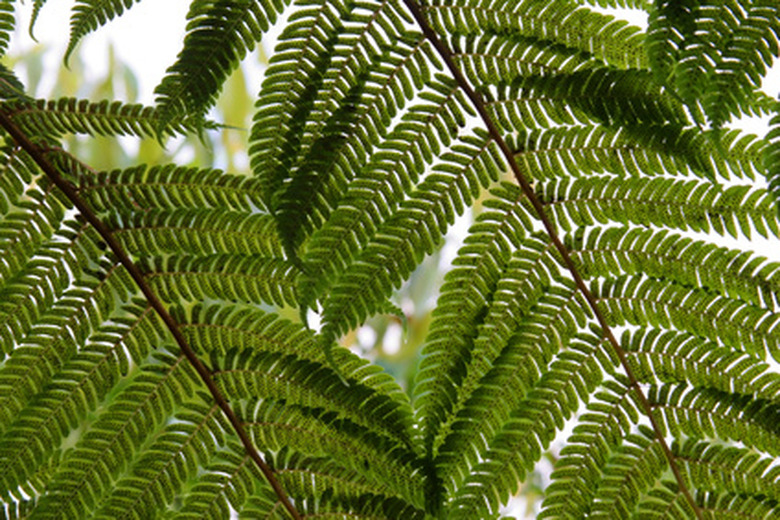Which House Plants Grow Well Under Fluorescent Lights?
When natural light is not available, many house plants can survive under fluorescent lights. If you have a window with a southern exposure, any natural light your house plants receive will help them grow and remain strong and healthy, so you can combine natural light with fluorescent lights during winter or other times when the natural light is insufficient. Many people who grow house plants favor cool white fluorescent lights over warm white ones.
African Violets
Many indoor gardeners cherish the African violet for its lovely flowers. This plant does well in low light situations. Hang a fluorescent light six to 12 inches from the top of the plant and leave it on for about eight hours a day. If your African violets also receive some natural light, they will perform very well. Leave your fluorescent light or lights on during the daytime when natural light is available.
- When natural light is not available, many house plants can survive under fluorescent lights.
- If you have a window with a southern exposure, any natural light your house plants receive will help them grow and remain strong and healthy, so you can combine natural light with fluorescent lights during winter or other times when the natural light is insufficient.
Asparagus Fern and Other Ferns
The delicate asparagus fern, or Asparagus densiflorus, is a hardy plant that does well as a house plant under artificial light. They prefer low to medium light, so hang your fluorescent light about one foot from the top of your plant and leave it on for about 12 hours each day. Other ferns that do well under fluorescent lights include the bird's nest fern, Boston fern, holly fern and maidenhair fern. Combining fluorescent light with natural light will benefit all ferns. Ferns prefer their soil to remain moist and like it when you mist them with a fine spray of water every day.
Begonias
Begonias such as the Angel wing, Beefsteak, Iron cross and Painted varieties perform well under fluorescent lights and produce attractive flowers. Begonias need medium light, so leave your fluorescent light on for 14 to 18 hours a day. Keep the soil moist and provide high humidity for these plants by keeping them on plant saucers filled with pebbles that you keep moist.
- The delicate asparagus fern, or Asparagus densiflorus, is a hardy plant that does well as a house plant under artificial light.
- Begonias need medium light, so leave your fluorescent light on for 14 to 18 hours a day.
Dieffenbachia
The Dieffenbachia maculata is a popular house plant that can grow into a small tree-like plant. The leaves are large and many varieties have spots or variegation. Dieffenbachias require medium light situations, so keep your fluorescent light on for 12 to 18 hours a day and give it some natural light if possible. Note that the Dieffenbachia is also called "dumb cane" because if eaten, it can cause an inability to speak. Do not allow children or pets to eat this plant.
Schefflera
The Schefflera arboricola grows to a large tree in tropical areas and is also called the octopus tree for its large, unusual flowers that have eight long "tendrils." Your Schefflera probably won't bloom indoors, but it is an attractive and popular house plant that can grow to several feet tall under medium to high artificial light. Hang your fluorescent light 12 inches above the tip of your Schefflera and position it so you can raise it when the plant grows taller. Leave the fluorescent light on for 14 to 18 hours each day and provide some natural light if possible.
- The Dieffenbachia maculata is a popular house plant that can grow into a small tree-like plant.
- Dieffenbachias require medium light situations, so keep your fluorescent light on for 12 to 18 hours a day and give it some natural light if possible.
